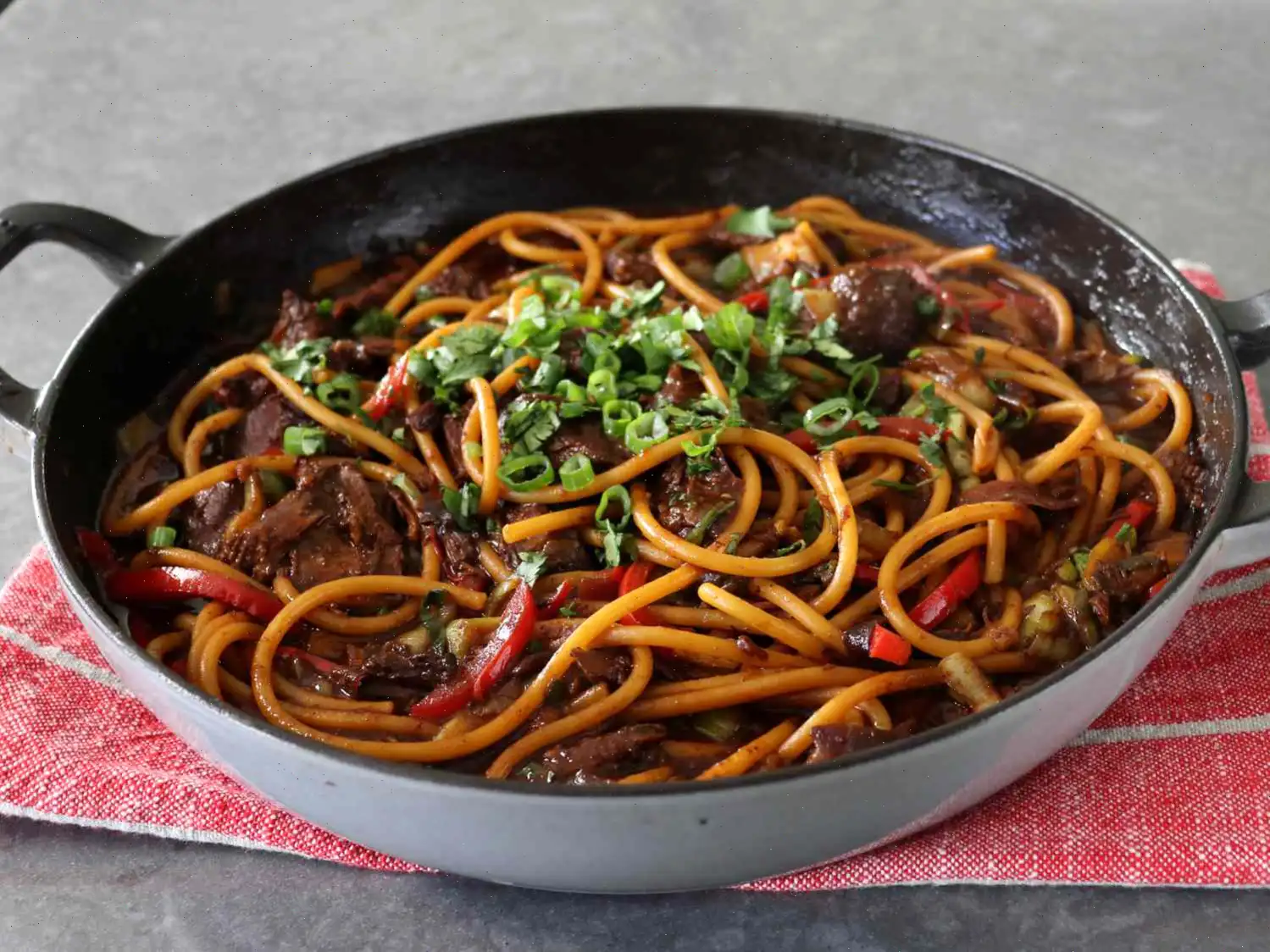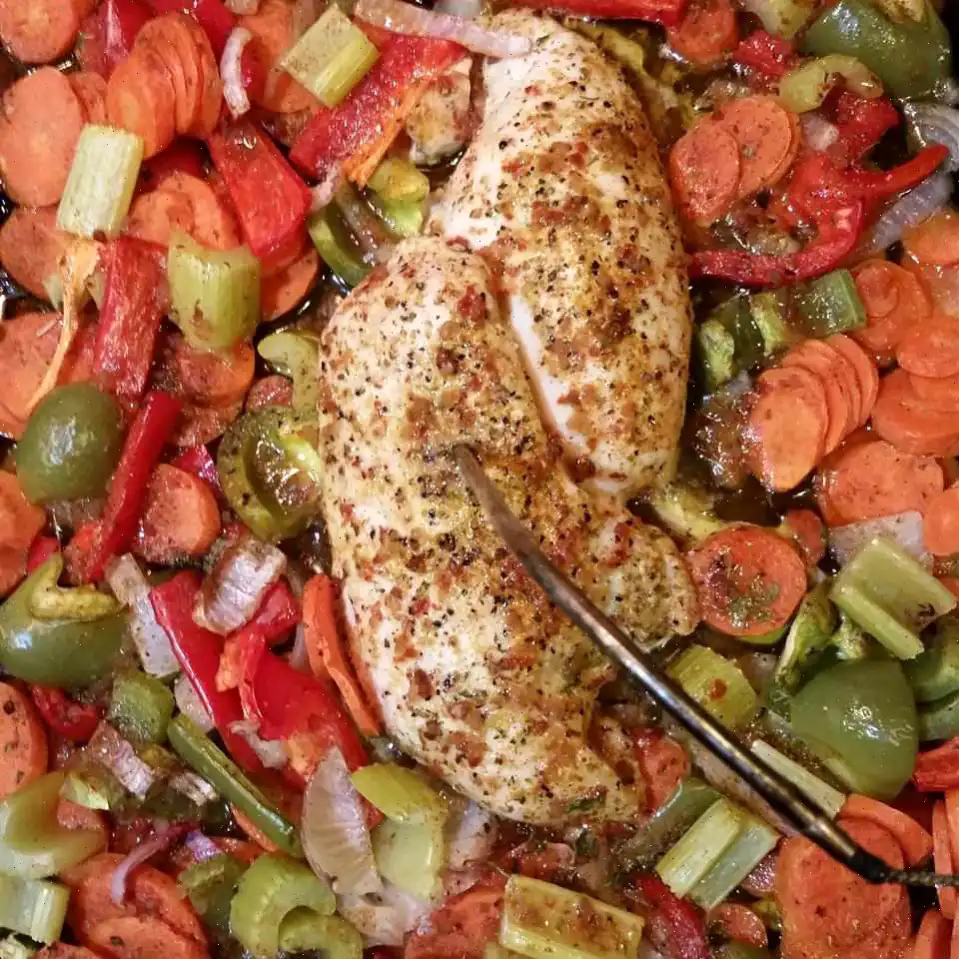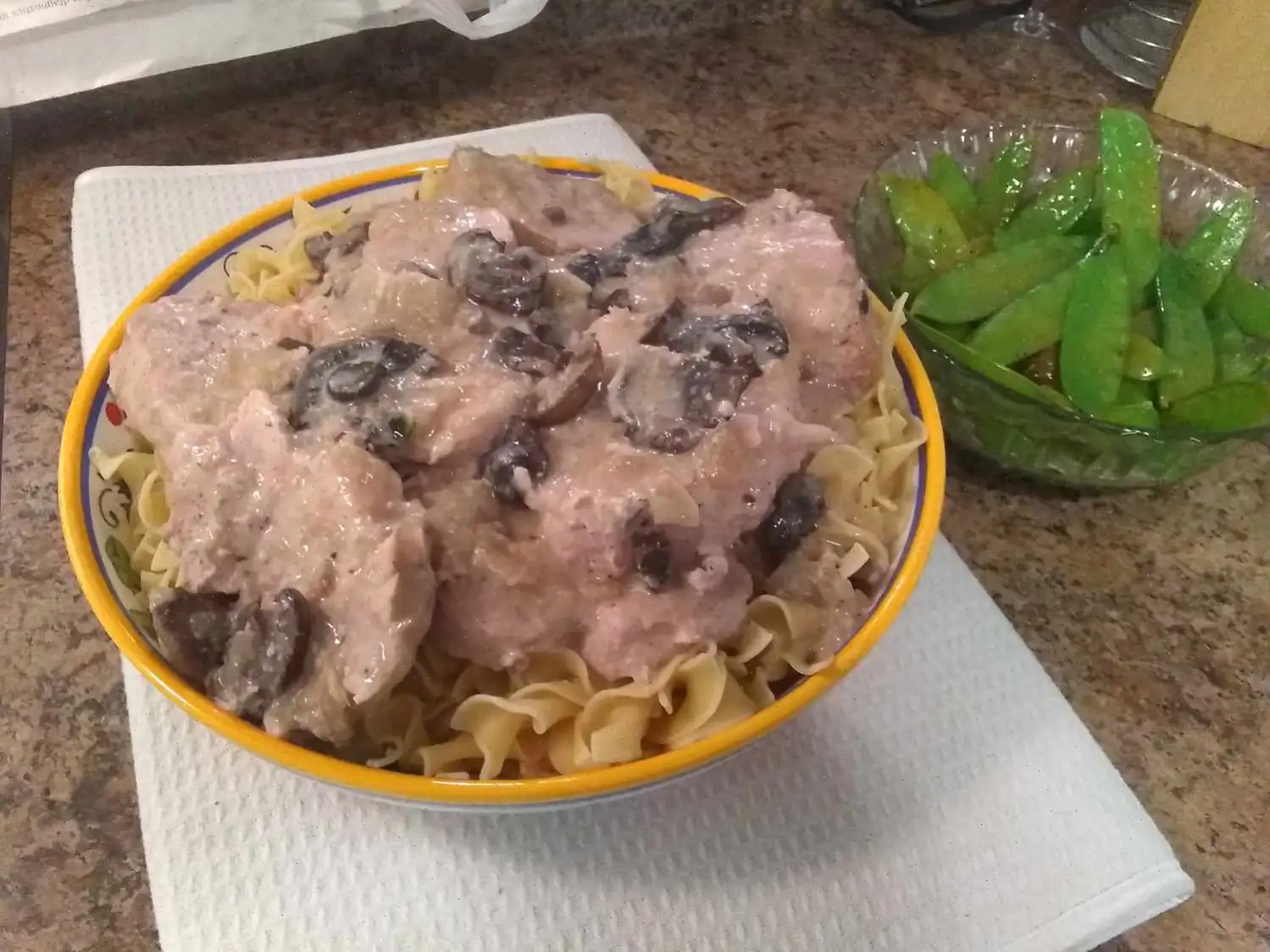
Miso Beef Noodles Recipe
Whenever I post a video recipe, its always nice when theres a story behind the dish. This usually involves me explaining where its from, what its called, and how my version differs from the original. Well, with this miso beef noodles recipe, I got nothing for you. Here, I simply threw a bunch of my favorite ingredients, and flavors together, and enjoyed it so much, that I decided to share.
I pride myself on my use of leftovers, and Im constantly trying to impress Michele with my ability to reimagine recently made dishes, and some of my best work in that area has featured cut up, already roasted meat, which Ive turned into a pasta or noodles. So, thats sort of what I was going for here, except I cooked the beef from scratch, specifically for this. Im sure we could get something similar by cutting up the beef first, and then browning it, before making the sauce as shown, but something tells me it wouldnt be quite the same. How? No idea. Thats the mysterious nature of food that still excites me, even at this advanced age. That aside, as I said in the video, if youve not yet discovered the magic of miso, this is a great way to get familiar. So, for that reason alone, I really hope you give this a try soon. Enjoy!
Ingredients
For the Miso Beef Sauce:
- 1/3 cup red miso paste
- 3 tablespoons maple syrup
- 1/4 cup rice vinegar
- 1 tablespoon soy sauce
- 1/2 teaspoon garlic powder
- 1/2 teaspoon freshly ground black pepper
- 1 teaspoon kosher salt
- 1 teaspoon sriracha hot sauce, or to taste
- 2 1/4 pounds boneless beef chuck roast
- 1 medium yellow onion, sliced
- 3 cloves garlic, minced
- 2/3 cup water
For the Noodle Dish:
- 3 cups water
- 1 cup sliced red bell peppers
- 1/2 cup sliced green onions, plus more to garnish
- 3 cups sliced bok choy
- 1/4 cup chopped cilantro
- 1 teaspoon cornstarch (optional)
- 2 teaspoons water to mix with cornstarch
- 8 ounces bucatini (or any other noodle or pasta)
Directions
Step 1: Preheat the oven to 350F (175C).
Step 2: In a mixing bowl, combine red miso paste, maple syrup, rice vinegar, soy sauce, garlic powder, black pepper, kosher salt, and sriracha. Whisk until smooth.
Step 3: Add the beef to the bowl and coat thoroughly on both sides. Poke the beef all over with a fork to help the marinade soak into the meat.
Step 4: In a braising pan, spread the sliced onions and minced garlic evenly. Place the beef on top of the onions and pour the sauce mixture over it. Add 2/3 cup water around the meat.
Step 5: Transfer the pan to the preheated oven and roast for 1 hour. After an hour, remove the pan, flip the beef, and spoon the pan drippings over the top. Return to the oven and roast for another hour.
Step 6: Cover the pan and continue roasting for 1 more hour. Afterward, remove from the oven and let cool.
Step 7: Spoon the caramelized onions over the meat, cover, and refrigerate overnight. (Optional: You can skip the overnight refrigeration step and continue the recipe right away.)
Step 8: The next day, cut the cold beef into 1/2-inch pieces and return them to the pan. Add 3 cups of water, place the pan over high heat, and bring it to a simmer. Simmer, stirring occasionally, until the meat is tender, about 45 minutes.
Step 9: Stir in the red bell peppers, green onions, and bok choy. Raise the heat to medium and cook until the vegetables are tender, about 5-10 minutes.
Step 10: Meanwhile, bring a large pot of salted water to a boil. Add the bucatini and cook until tender yet firm to the bite, about 9-12 minutes.
Step 11: In a small bowl, mix cornstarch with 2 teaspoons of water. Stir this into the sauce (only if you want a thicker sauce) and cook for about 1 minute, stirring constantly.
Step 12: Using tongs, transfer the cooked noodles to the pan with the beef and vegetables. Toss everything to combine.
Step 13: Serve immediately, garnishing with cilantro and green onions, if desired.
Nutrition Facts
| Nutrition Facts (per serving) | Amount |
|---|---|
| Calories | 829 |
| Total Fat | 41g (53% DV) |
| Saturated Fat | 17g (83% DV) |
| Cholesterol | 212mg (71% DV) |
| Sodium | 1667mg (72% DV) |
| Total Carbohydrate | 43g (16% DV) |
| Dietary Fiber | 5g (17% DV) |
| Total Sugars | 15g |
| Protein | 73g (145% DV) |
| Vitamin C | 96mg (107% DV) |
| Calcium | 229mg (18% DV) |
| Iron | 9mg (49% DV) |
| Potassium | 1538mg (33% DV) |
Origin Story
The origins of miso beef noodles can be traced to the deep culinary traditions of East Asia, particularly Japanese and Chinese noodle dishes that focus on rich, savory broths and tender meat. While the dish itself does not belong to a specific region, it brings together flavors from different parts of the world. The combination of miso, a fermented soybean paste, and tender beef is a nod to the traditional Japanese umami-rich dishes, such as miso soup, while the addition of noodles draws inspiration from Chinese lo mein and other noodle-based dishes.
Regional Variations
Though miso beef noodles is not tied to a particular regional dish, there are regional influences at play. In Japan, miso is a staple ingredient, often used in soups and stews. In China, noodle dishes are varied and vibrant, ranging from stir-fried to brothy creations. By combining miso with noodles and beef, this recipe merges the best of both worlds, resulting in a dish that feels both familiar and innovative. Regional variations might include switching miso types (red, white, or mixed) or incorporating local vegetables and noodles, such as Chinese bok choy or Japanese udon.
Differences from Similar Dishes
While miso beef noodles shares some similarities with other Asian noodle dishes, such as lo mein or beef ramen, it sets itself apart with the unique use of miso paste. Unlike traditional beef ramen, which features a clear broth or soy-based seasoning, this dish offers a deeper, richer flavor thanks to the fermented miso paste, maple syrup, and a balance of savory and sweet elements. Additionally, the slow-cooked beef in miso beef noodles becomes incredibly tender, giving it a distinct texture and depth compared to the quicker stir-fried beef commonly found in other noodle dishes.
Where It's Typically Served
Miso beef noodles can be served in a variety of settings, ranging from casual family meals to more formal gatherings. It is particularly popular in home kitchens, where the slow-cooked beef and noodles can be prepared in advance, making it an excellent dish for dinner parties or family gatherings. In restaurants, it may appear as part of a larger menu offering traditional East Asian comfort foods or fusion-style dishes that mix traditional ingredients with contemporary flair. Some high-end eateries might also offer a gourmet version, with a focus on quality ingredients and meticulous preparation methods.
Interesting Facts
- The inclusion of miso paste in the recipe not only enhances flavor but also adds numerous health benefits. Miso is rich in probiotics, which promote gut health, and it contains beneficial antioxidants and vitamins.
- The slow-cooked beef used in this dish can be easily swapped for other meats, such as pork or chicken, allowing for flexibility in flavor. However, the beefs rich taste and tender texture are key to the dish's success.
- The origins of miso itself go back over 2,500 years, making it one of the oldest fermented foods in human history. It was first used in China and later became an integral part of Japanese cuisine.
- Despite being a simple dish, the layers of flavorfrom the fermented miso paste to the sweetness of the maple syrupcreate a complex and satisfying taste profile that continues to delight food lovers around the world.
You can listen to this recipe in AI audio format. Simply click the play button below to listen to the content in a format that suits you best. It’s a great way to absorb information on the go!
FAQ about Miso Beef Noodles Recipe
Comments
Jennifer Lewis
10/04/2022 09:06:34 PM
I recently cooked this dish in the slow cooker. I stuck to the sauce recipe but used a bit less water. After 4 hours, I took out the beef, let it rest, and then added noodles and stir-fry vegetables directly into the sauce in the crockpot. The result was absolutely delicious! Thank you so much!
Margaret Young
01/08/2025 01:34:02 PM
Tried this recipe for the first time and it was a hit! I used my Instant Pot and included onions, sauce, and garlic. Pressure cooked on high for one hour, naturally released for 10 minutes, then quick released the remaining steam. Shredded the meat and added the veggies - carrots, sweet radish, Mexican squash, bok choy, and bell peppers to the sauce. Cooked the veggies until al dente, mixed in the shredded beef, added noodles, and garnished. Absolutely delicious! Excited to explore more ways to use miso in my cooking!
Kelly Baker
05/17/2025 10:16:37 PM
This recipe from Chef John has become my absolute favorite! Lately, I've been enhancing it by including pickled Fresno peppers, crispy fried shallots, and chili oil when serving, and I can't imagine going back to the original version. Highly recommended!
Robert Williams
10/16/2024 12:31:14 PM
Delicious! Next time I plan to include carrots as well. I find the bucatini noodles a bit too thick for my liking; spaghetti would be a better choice. To speed up the cooking process, thinly sliced beef could work well too. This recipe is a keeper - thank you, chef!
Victoria Perez
11/09/2023 04:55:05 AM
Absolutely fantastic! Incredibly flavorful and decadent. I followed the recipe over two days and the fat solidified overnight. If I were to make it again (and I definitely will), I would remove the solidified fat layer before reheating on the second day. I attempted to skim off some of the fat on the surface, but it was not very successful.
Angela Adams
06/30/2023 08:57:02 PM
Tasty dish! I made a small modification by using 1lb of noodles instead of 8oz. The sauce and meat were ample to accommodate the extra noodles, and I also threw in some mushrooms.
Gregory Lewis
08/02/2022 02:52:33 PM
Extremely flavorful and delightful
Nancy Cruz
01/04/2025 08:41:13 AM
I typically don't leave reviews for recipes, but I feel it's crucial to acknowledge outstanding work. Chef John's recipe incorporates an unconventional mix of ingredients that result in an incredibly delicious dish. From the first bite, I was hooked! Not only did I enjoy it, but even those who aren't usually fans of meat adored it and wanted seconds. I shared the recipe with my daughter, and her notoriously picky-eating family is now obsessed with it too. This dish comes highly recommended - the leftovers are just as fantastic!
Nicholas White
04/12/2023 10:18:56 PM
I want to express my gratitude for introducing me to miso with this dish! It was both simple to make and incredibly delicious.
Jason Hall
06/04/2025 07:19:29 AM
Incredible! Chef John has done it once more. The beef was incredibly tender and delightful!
Emily Hall
02/06/2024 10:09:26 PM
I prepared this dish using a 3.5 lb roast from our preferred Maryland beef supplier. I pretty much stuck to the beef recipe, although I skipped the refrigeration step. Consequently, I had to braise it a bit longer at the end to ensure it was tender. I swapped out bok choy for kale and pasta for ttekbokki rice cakes. My family absolutely adored this meal. All three of my kids wolfed it down and went back for seconds. The dish is incredibly flavorful, with a hint of sweetness from the caramelization that balances it perfectly. If you have a few hours to spare at home, it's a simple process to pop it in the oven. I will definitely be making this again.








